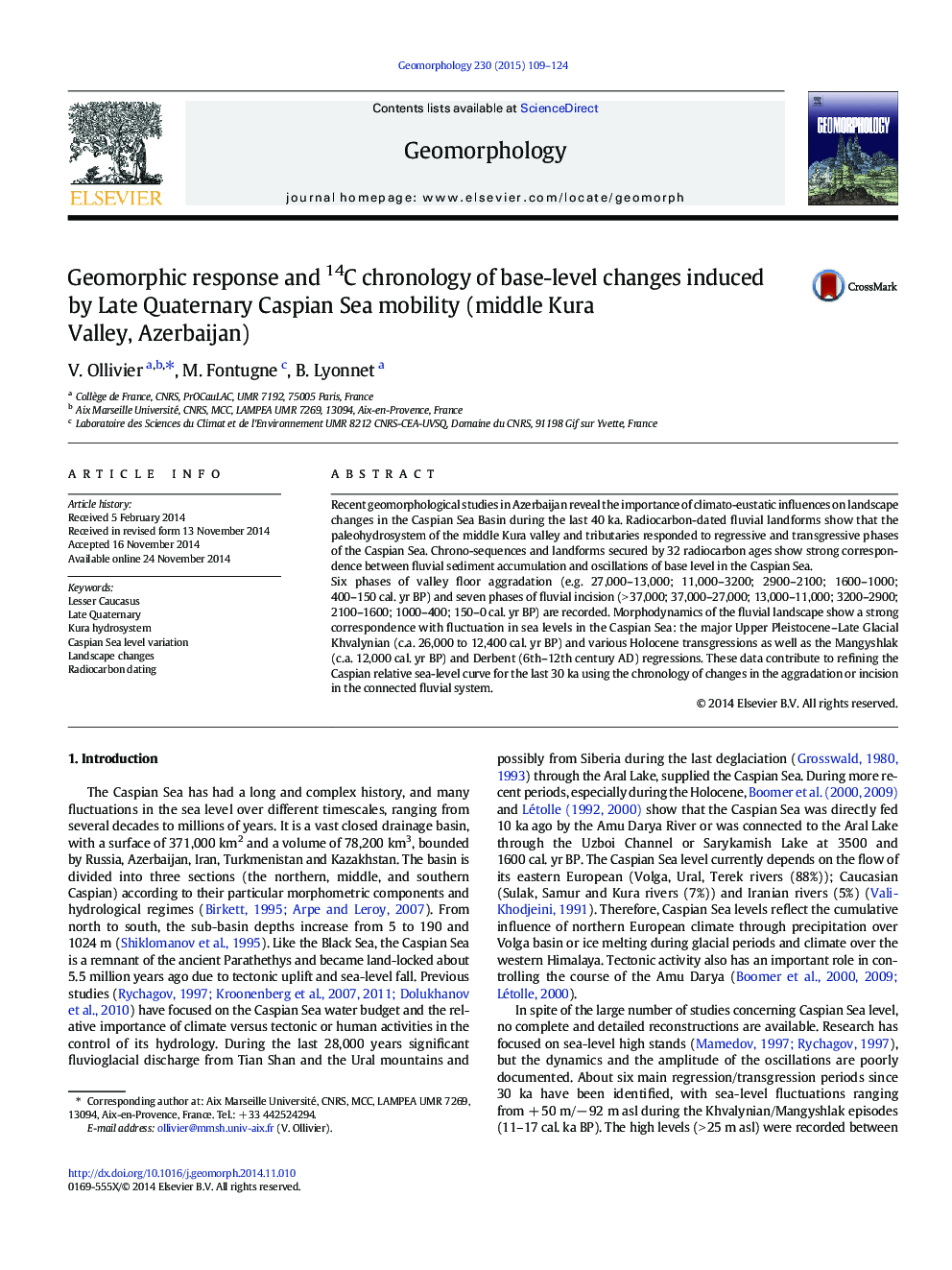| کد مقاله | کد نشریه | سال انتشار | مقاله انگلیسی | نسخه تمام متن |
|---|---|---|---|---|
| 4684270 | 1635419 | 2015 | 16 صفحه PDF | دانلود رایگان |

• Caspian Sea level changes have impacted on the Caucasus Quaternary landscapes.
• Research on river response to base-level changes is undertaken.
• There are strong links between inland fluvial sedimentation and marine oscillations.
• Long-range, base-level change impact is recorded on the Caspian Sea basin hydrosystems.
• The Caspian relative sea-level curve for the last 30 ka is partly refined.
• Lesser Caucasus; Late Quaternary; Kura hydrosystem; Caspian Sea level variation; landscape changes; radiocarbon dating
Recent geomorphological studies in Azerbaijan reveal the importance of climato-eustatic influences on landscape changes in the Caspian Sea Basin during the last 40 ka. Radiocarbon-dated fluvial landforms show that the paleohydrosystem of the middle Kura valley and tributaries responded to regressive and transgressive phases of the Caspian Sea. Chrono-sequences and landforms secured by 32 radiocarbon ages show strong correspondence between fluvial sediment accumulation and oscillations of base level in the Caspian Sea.Six phases of valley floor aggradation (e.g. 27,000–13,000; 11,000–3200; 2900–2100; 1600–1000; 400–150 cal. yr BP) and seven phases of fluvial incision (> 37,000; 37,000–27,000; 13,000–11,000; 3200–2900; 2100–1600; 1000–400; 150–0 cal. yr BP) are recorded. Morphodynamics of the fluvial landscape show a strong correspondence with fluctuation in sea levels in the Caspian Sea: the major Upper Pleistocene–Late Glacial Khvalynian (c.a. 26,000 to 12,400 cal. yr BP) and various Holocene transgressions as well as the Mangyshlak (c.a. 12,000 cal. yr BP) and Derbent (6th–12th century AD) regressions. These data contribute to refining the Caspian relative sea-level curve for the last 30 ka using the chronology of changes in the aggradation or incision in the connected fluvial system.
Journal: Geomorphology - Volume 230, 1 February 2015, Pages 109–124